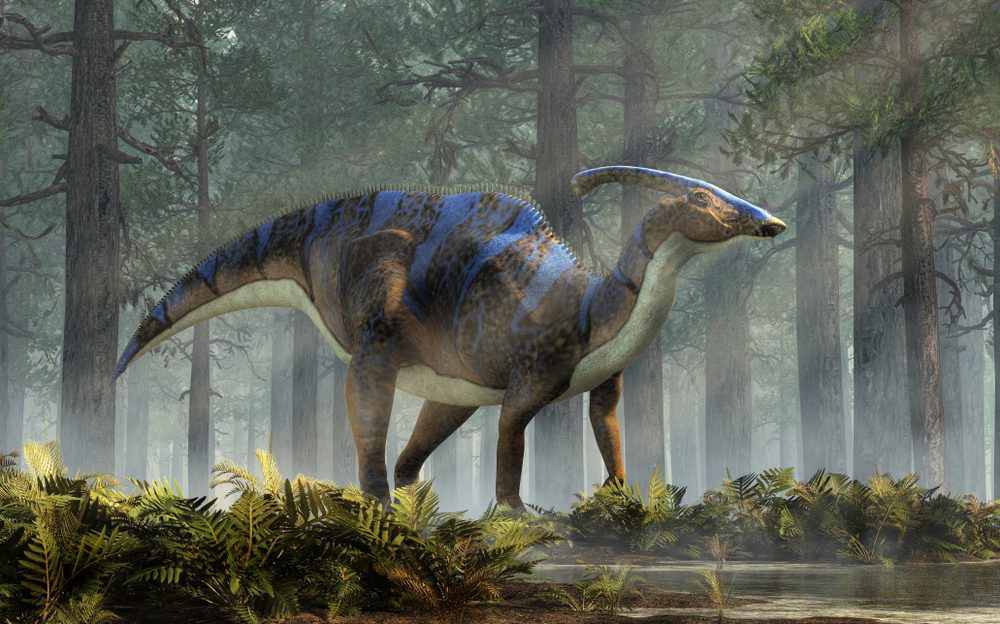Fossilized dinosaur bones are always an incredible discovery, but it’s a true treat when scientists manage to unearth hints of soft tissue that have somehow managed to remain intact until the present day.
A few years ago, scientists from North Carolina State University discovered blood vessel-like structures in the 80 million-year-old fossil of a hadrosaur known as Brachylophosaurus canadensis, a 9-meter (30-foot) long herbivore with a duck-like bill that stomped around in the Late Cretaceous.
In their study, reported in 2015, they managed to highlight that these structures are almost certainly the relics of actual blood vessels that were once pumping blood around a dinosaur, not merely biofilm left over from invading bacteria or any other contaminants.
They did this by examining the specimen with high-resolution mass spectroscopy that managed to sniff out several proteins that can be found in the cells of the blood vessels, such as myosin.
In their current state, millions upon millions of years after they last ran with blood, the vessels remain in remarkable shape. Transparent and slightly flexible to the touch, the structures are still in the shape that you’d expect a bundle of animal veins to look like.
Paleoart of a very handsome hadrosaur. Image credit: Daniel Eskridge/Shutterstock.com
The find was particularly exciting as it added to the mounting evidence that organic structures, such as blood vessels and cells, can remain intact for millions of years without fossilizing.
“This study is the first direct analysis of blood vessels from an extinct organism, and provides us with an opportunity to understand what kinds of proteins and tissues can persist and how they change during fossilization,” Tim Cleland, study author and molecular paleontologist at the University of Texas at Austin, said in a statement released at the time.
“This will provide new avenues for pursuing questions regarding the evolutionary relationships of extinct organisms, and will identify significant protein modifications and when they might have arisen in these lineages,” explained Cleland.
Dinosaur blood vessels aren’t the only soft tissues that scientists have managed to get their hands on. It’s actually surprisingly common to find the preserved skin of “mummified dinosaurs.”
While all of this may sound a little Jurrasic Park-esque, the real potential lies in their ability to open up some fascinating insights into the history of proteins and how they help animals adapt to their environment.
“Part of the value of this research is that it gives us insight into how proteins can modify and change over 80 million years,” added Mary Schweitzer, a molecular paleontologist at NC State and co-author of the paper describing the research.
“It tells us not only about how tissues preserve over time, but gives us the possibility of looking at how these animals adapted to their environment while they were alive.”
Source Link: Intact Dinosaur Veins Were Running With Blood 80 Million Years Ago
